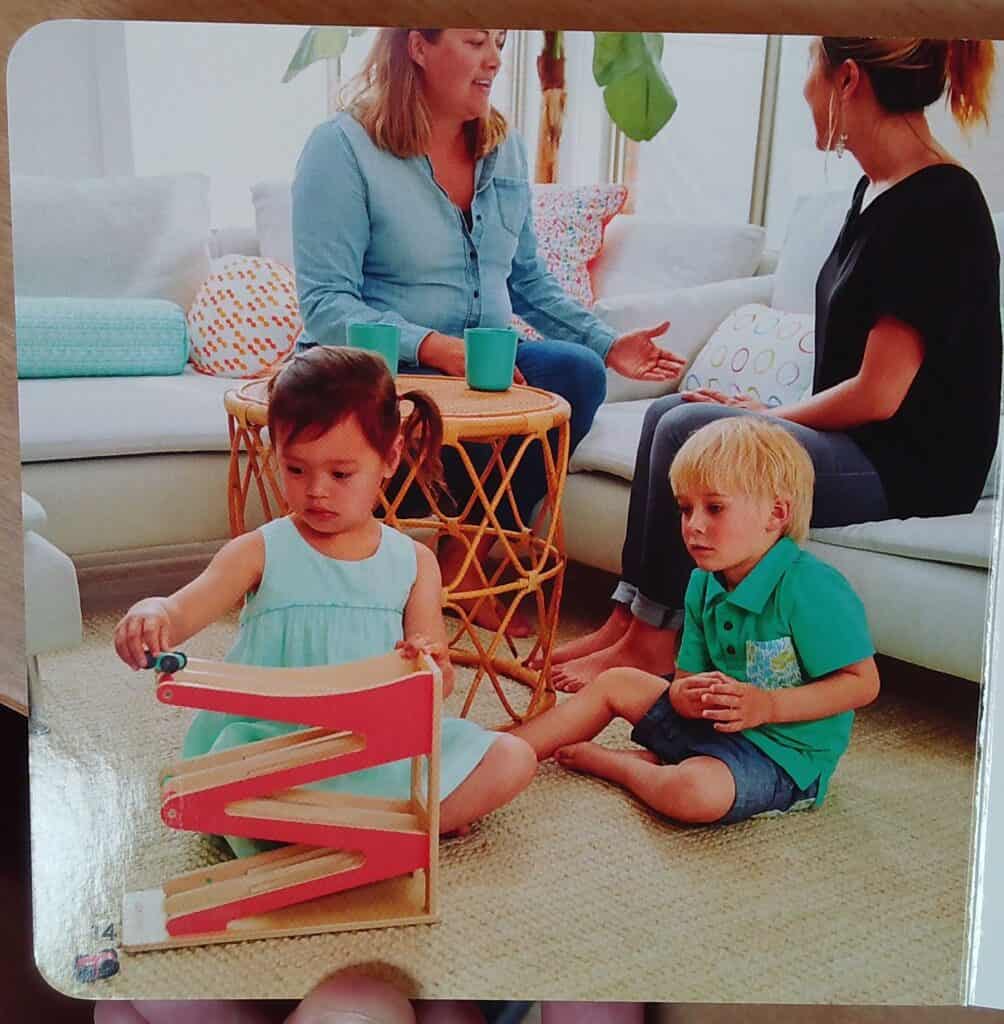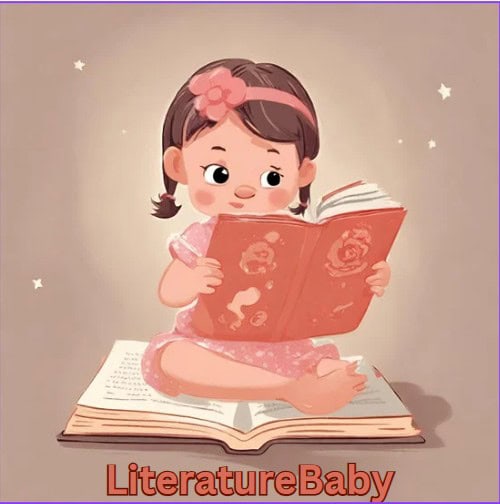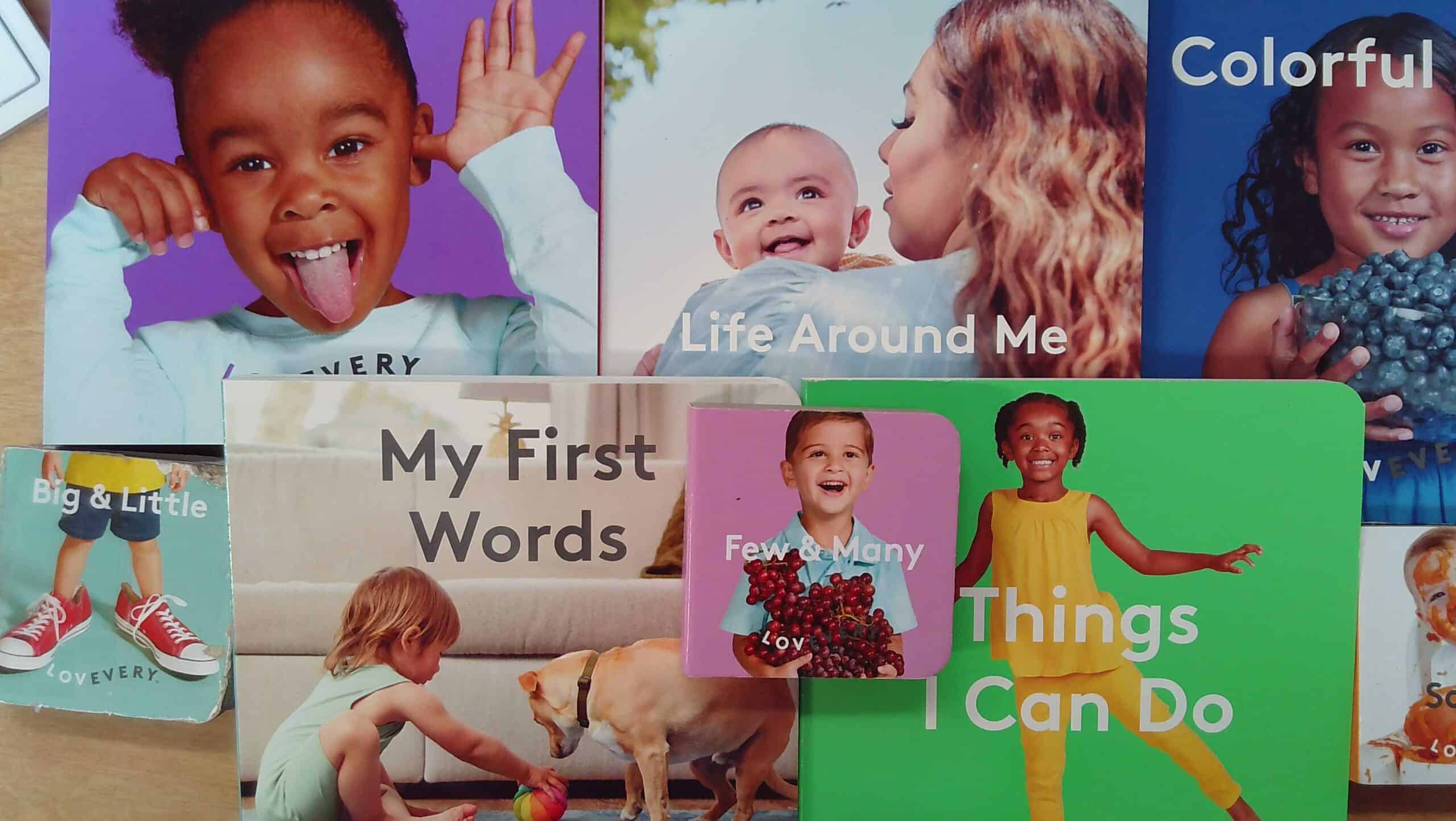I have the Lovevery subscription boxes for my daughter. I know that they are expensive, but I really felt confused as a first time parent on what I wanted to give my child. There are so many ads targeting new parents, and “mom guilt” is so real as a working mother. I wanted to give my child the best, even if I couldn’t afford the best. So I scrimped and saved, and made sure to do the subscription and add on the book bundles. Honestly, there have been some hits and misses on the subscription boxes and on the books, but I have enjoyed it overall.
The Problem
However, I really struggled with the books. It wasn’t the writing or the concepts, it was the pictures. Over and over again, we are hit by social media telling us how we should parent, and constantly showing us how we are failing at parenting. The Lovevery books feed into that problem.
Lovevery presents a dazzling idealized world. The rooms for the kids are all miraculously clean, the walls are white, everything is organized, and I just want to scream. The kids are wearing fashionable clothes that all remarkably have little pockets of fabric from the subscription boxes that immediately make me think I am doing the wrong thing by not buying my daughter an outfit with that exact print. And how is it that every single child’s clothes are spotless, all the time!!! Seriously, does someone follow the kid around with a tide marker? My child, bless her wild heart, has an outfit on for ten minutes and her hair is out of the bows, socks half on and off, and at least two stains. My daughter can go through three outfits on a good day. Of course, I let my daughter play at the playground and in the dirt. In the Lovevery books kids have a playdate in a pristine house with only one toy on a coffee table that is probably worth $3,000, while sitting on a white carpet that doesn’t seem to have a speck of dirt. Are we living in the same universe? Clearly, I am doing everything wrong at this point.
I pull out the books to encourage my daughter, and instead of simply immersing myself in the story, I can’t stop thinking maybe I should have bought her an outfit just like the kid in the picture. Why won’t my daughter zip up her own pajamas? Why does my daughter fling soap suds around the bathtub versus playing quietly with her toys? Question after question about why I am not good enough, why my daughter isn’t good enough, and why my house isn’t good enough. Every page calls into question my parenting.
As a parent, it is hard to look through those books and not be bothered by the perfection on showcase. It is hard not to compare your life and the life on the page, because it isn’t some fantasy house. The books are all focused on reality and they provide real pictures to back up that reality. In the Berenstain Bears house, it looked comfy and cozy, and never looked pristine and white. I mean there was a whole book dedicated to cleaning up the rooms! But here is the thing, even if it had looked perfect in the pictures, it wouldn’t have bothered me as much because the Berenstain Bears was animated. It was hand drawn, and so there is a separation between the worlds. By having the books have realistic pictures, Lovevery has shown the best possible world a child could see. And subsequently they have also shown a world that I can’t always give to my toddler.
Despite my personal issues with the books, I still read them to my daughter. I still persevere because my daughter needs to see realistic images as well as animated images, and Lovevery does deal with real life issues. She has to go to the doctors and the dentist, and she has to see a firefighter, and play at a playground. She needs to navigate playdates and her emotions. All of these things were covered in previous animated books, but Lovevery has brought these issues into the real world for kids with photos, and that isn’t a terrible thing for her.
Currently, my daughter is immersed in the infamous “Pee and Poop” books from Lovevery. Yes, I am trying and failing to potty train her. However, my daughter is interested every time she looks at the books. She isn’t focused on how perfect the dad is in the story, how calm everyone is when there is an accident, or how perfectly clean that living room is. Her focus is watching JJ try something that we are teaching her in real life. While I may struggle with the pictures as a parent, as a child they help her learn.

Features that Foster Learning
One of the reasons why Lovevery is so powerful as a series is that they try to include text features that we want children to see. Some of my childhood books have text features, but a lot of them do not. Lovevery includes page numbers, which is important to show your child early on. Even today, some board books include them, and others do not. Lovevery also puts certain words in bold or colored or in a specific position. For example, when Ansel is pushed the cars down the ramp on his play date, the word “down”, shows it written in a slope.

Interactive Features
My Daughter really struggles to read. She is extremely active as a toddler. Even her gym teacher is shocked by her energy levels. When we go to the doctor’s office, she climbs over everything, including the doctor. Our visits take twice as long, and at points we almost have to trick her into stopping. Fruit Bites from Motts work great if you need a quick grab and go bribe (see terrible parenting, but realistic!).
So the problem isn’t that my daughter doesn’t like reading, it is that she prefers to run an Olympic marathon rather than sit still long enough to read a book. Even at night during bedtime reading, she wants to flip the page every two seconds. That is a real struggle and frustration for me. I want to read every single word and have her focus on the pictures and the words. She wants to run around in circles.
One of the best strategies I have for getting her to sit with a book and actually focus, is to make that book interactive. Lovevery has several interactive books and they have a variety of ways to interact. One of the best books so far has been Leo and Melody on the Farm. This book has a couple lift the flap moments, but that isn’t the only interaction. On one page, the girl is going through a lavender meadow and the book has a satchel of lavender embedded so that you can put the book up to your nose and smell it. There is a section where they are running and you can feel the sandpaper texture at the railings for the farm. The book became about using all of your senses to read. This interested my daughter and made her take the time to discover what was on the other pages. It also slowed down her turning of the pages.

The Ability to mimic
One of the great features of having realistic pictures is that children know that they can mimic the behaviors of the kids in the photos. There is no fantasy element, so my daughter can look at the page and then copy what the kid does on it. Sometimes this works out great. Sometimes, I don’t catch on fast enough. For example, one of the books “Things I can Do” shows a little girl helping. It is so cute. This adorable girl has a little dustbin and duster and is picking up. I couldn’t understand three days later why my daughter decided to comb the carpet with my hairbrush and the lid of a bin. It wasn’t until later that I realized she was copying what the little girl was doing, but didn’t have the appropriate tools, so she made her own.
The thing is, your child might not automatically demonstrate the skill being shown in the book for days, but your child does remember seeing it. Children love to mimic what others are doing. They watch Sesame Street or Bluey and try to do what their favorite characters are doing. Which is why my daughter enjoys stuffing food into her mouth. Thank you Cookie Monster and Grandpa for the joy of cleaning up my dinner table. Like I need one more problem in my life.
This is no different. They see a picture, and they try to imitate it. For the most part, Lovevery sticks to really wholesome, sweet, and educational mimic opportunities. In the same book, it shows a little girl sticking out her tongue. This helped when my daughter went to the doctor and stuck out her tongue when asked. How many times as a parent do you ask your child to stick out their tongue? You don’t, but it is a necessary skill for a child at a doctor’s office. By including that picture in the book, it helped me out as a parent when we went to the doctor’s office.
Science behind the Books and the Toys
One of the reasons I originally reached for Lovevery when I was pregnant is because I love to research as a teacher. I value when others put thought and time into their research. Lovevery is a research based company. As a teacher who has taken the Science of Reading courses like LETRS, I can see how Lovevery is leveraging the knowledge and research on reading and child rearing. Each time I get a subscription box, it explains the science behind why the toy is developmentally appropriate, and what your kid learns from it.
Built for kids hands
I have watched as my daughter started with the earlier books and has gone up to the almost three year old books. The fact is that I didn’t always understand the purpose of the size of books at first, but now I realize how important book size can be to a kid. A few of the earliest books with no real words, just pictures, are made to fit in her hands. Even though she got these books at less than a year old, she still holds these little cardboard books and shuffles through them almost every morning. The pages on many of the Lovevery books are thick which allows her to turn the page easier than some of the thinner board books. That allows my daughter to be independent while reading. While I love to read to her, I want her to feel comfortable grabbing a book of her own and flipping through it. Right now, she doesn’t understand the words that she sees, but she does get the pictures, which are usually very focused on one item, and not tons of background.

Another little struggle
At times, I am not sure what exactly is developmentally appropriate for my kid. Should my child be able to stand on one foot by now, or is that is six months from now? Occasionally the Lovevery books make it more difficult for me. I look at my child and I am not sure if she is keeping up. As a parent, we are bombarded with the idea that our child should do this by this age, and that by that age. Then we read the research or talk to our doctors, and they say, well it really falls in a range, and you start to wonder if your child is behind and the doctor just doesn’t want to say anything. The Lovevery books make that hard for me. Sometimes my daughter can do the things in the books and other times, she isn’t there yet. For example, in Goodnight Zoe, Zoe is able to zip up her pajamas. When I got this book, my daughter was nowhere near that point, and honestly we have always started her jacket for her and then let her zip it the rest of the way, but she didn’t zip the start.

Conclusion on Lovevery Books
Am I uncomfortable as a parent reading the books that Lovevery sends me?
Yes. In some ways I am because I am not perfect and a part of me wants to be a perfect parent.
Will I stop reading them to my daughter because they make me uncomfortable?
No. My discomfort is not as important as my daughter interacting with a book and making connections between herself, real life, and the book in her hand.
While I may not love Lovevery, there is value to my child. Sometimes as a parent, we have to be uncomfortable to give our children better than we got. And honestly as parents we need to learn to live with being uncomfortable with topics at the toddler age because it will only get harder. Talking with your child about smoking, drinking, sex, drugs, peer pressure, social media, and AI are all hard topics, so I have to learn to live with being uncomfortable. I might as well start with pee and poop, and perfectly set up living rooms. It only gets harder from here.


